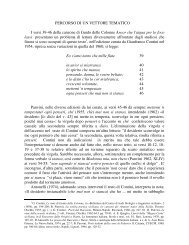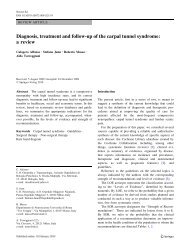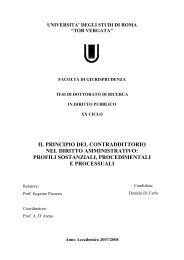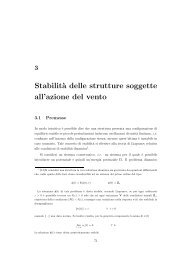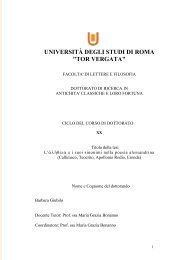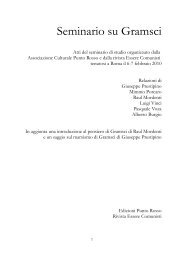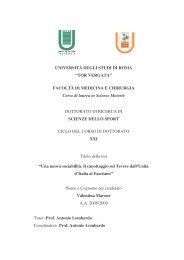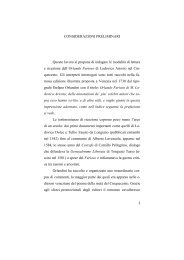Universitā degli studi di Roma “Tor Vergata” - ART - TORVERGATA ...
Universitā degli studi di Roma “Tor Vergata” - ART - TORVERGATA ...
Universitā degli studi di Roma “Tor Vergata” - ART - TORVERGATA ...
Create successful ePaper yourself
Turn your PDF publications into a flip-book with our unique Google optimized e-Paper software.
where et is the turbulent <strong>di</strong>ffusion coefficient (Eddy <strong>di</strong>ffusivity, of the order 10 -3 m 2 s -1 ) that is<br />
higher the em which is of the order 10 -9 m 2 s -1 . Moreover, et depends on the flow, whereas em<br />
depends on the fluids. et is assumed to be isotropic and homogeneous.<br />
The equation (Eq. 2.2-11) provides an economical and a tolerable accurate model for<br />
turbulent <strong>di</strong>ffusion at the mid- and far-fields that are explained below.<br />
The Reynolds analogy comes from the following consideration. In a turbulent flow the<br />
turbulent velocity fluctuations transfer momentum more rapidly than in laminar flow and the<br />
shear stresses between adjacent water layers are higher than in laminar flow. This stresses are<br />
called turbulent or Reynolds stresses:<br />
τ = ρ < u u<br />
t<br />
'<br />
x<br />
'<br />
y<br />
><br />
Eq. 2.2-12<br />
τt is proportional to the correlation between the turbulent velocity fluctuations and remembering<br />
the equation (Eq. 2.2-11) where et is proportional to the correlation between the tracer<br />
concentration and the velocity fluctuation then because of the problem for estimating τt into the<br />
momentum equation, Boussinesq in 1877 proposed the following relationship for turbulent<br />
stress:<br />
∂〈 ux 〉<br />
τ t = ρν t<br />
∂y<br />
Eq. 2.2-13<br />
Reynolds pointed out that the turbulent Ed<strong>di</strong>es that transfer momentum transfer mass too<br />
and then it is possible to write by analogy:<br />
∂〈 c〉<br />
= −e<br />
∂y<br />
J y t<br />
As equation (Eq. 2.2-15), et and νt have the same units [m 2 /s].<br />
Eq. 2.2-14<br />
The equation Eq. 2.2-14 is equal to equation Eq. 2.2-11, but the first one is generally<br />
valid for turbulent flow, while the second one stems from the analogy between the laminar and<br />
homogeneous stationary turbulent flows where the variance of tracer cloud increases linearly<br />
with time.<br />
Another approach is from Reynolds analogy for tracer mass the eddy <strong>di</strong>ffusivity is equal<br />
to turbulent viscosity:<br />
43



